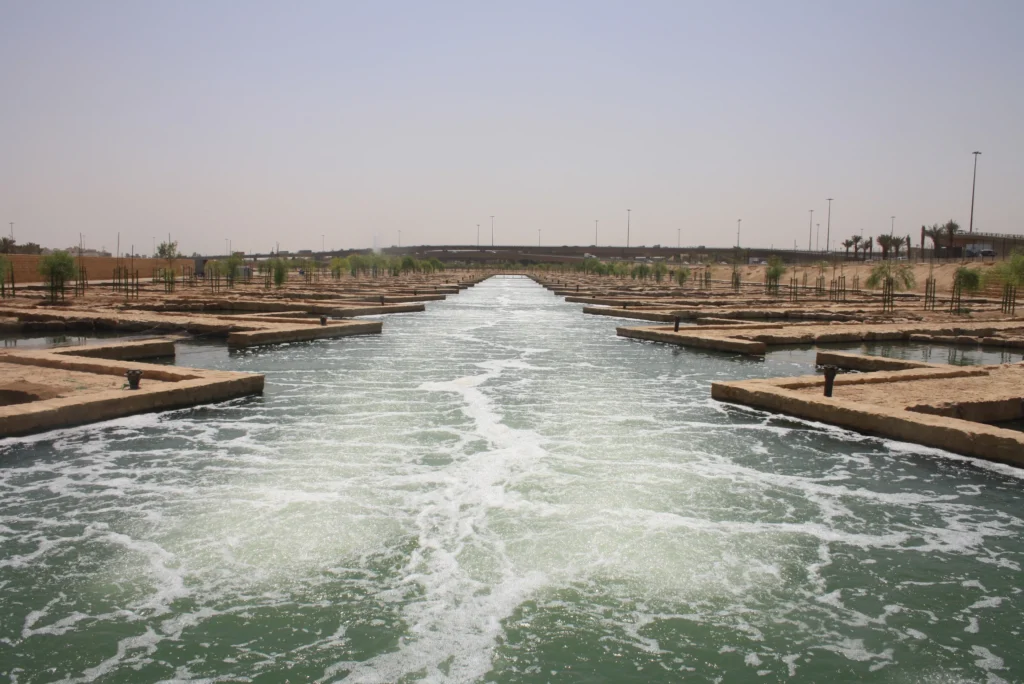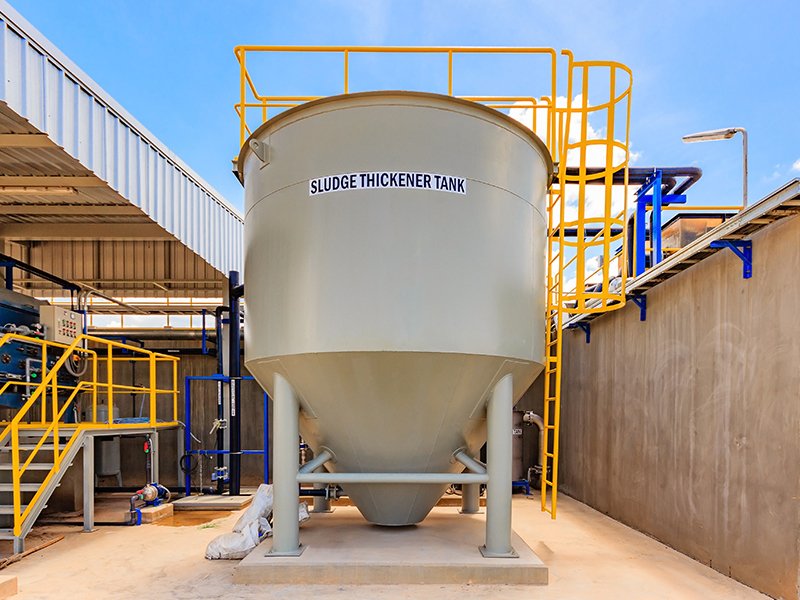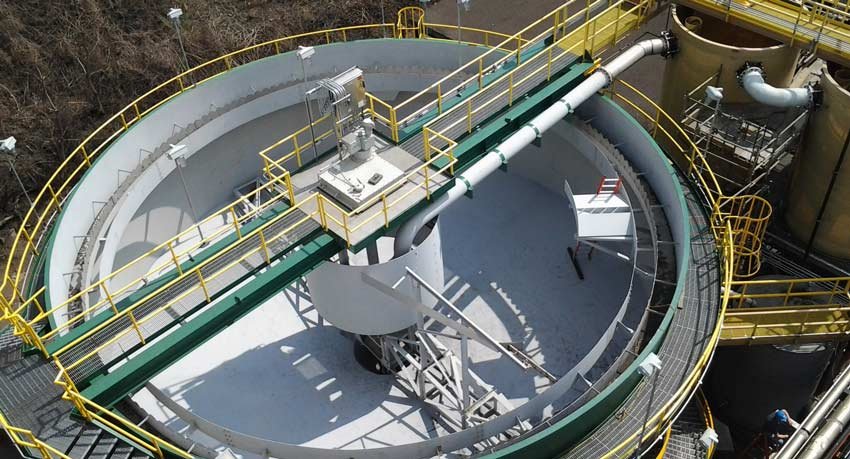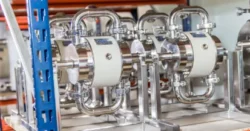
Small Bubble Aerators in Wastewater: Enhancing Treatment Efficiency

Small bubble aerators are essential components in modern wastewater treatment processes. They are designed to enhance the efficiency of biological degradation by maximizing oxygen transfer to the microorganisms responsible for breaking down organic matter. The fine bubbles, typically between 1 to 4mm in diameter, create a large surface area that improves oxygen solubility and transfer rates in the wastewater.
The application of small bubble aerators spans across various aeration systems, including the widely used fine bubble diffusion method. By integrating these aerators into wastewater treatment facilities, operators can achieve better control over the aeration process, which is crucial for process stability and meeting environmental discharge standards. Furthermore, the operational effectiveness of these systems combined with their energy conservation potential makes small bubble aeration a staple in both municipal and industrial wastewater management strategies.
Key Takeaways
- Small bubble aerators optimize oxygen transfer to microbes in wastewater treatment.
- They provide greater process control and efficiency in aeration systems.
- Their use reflects a commitment to energy conservation and environmental compliance.
Basics of Aeration in Wastewater Treatment
Aeration is a critical process in wastewater treatment that leverages the power of oxygen to support the breakdown of contaminants. This section explores the specifics of small bubble aerators and their role in this essential procedure.
What Are Small Bubble Aerators?
Small bubble aerators are devices that disperse oxygen in the form of tiny bubbles into wastewater. These bubbles, typically less than 2 millimeters in diameter, provide a large surface area in contact with the water, allowing for a highly efficient transfer of oxygen. The Fine Bubble Aeration technology is known for its effectiveness in supporting aerobic microbial activity, which is instrumental in degrading organic pollutants.
Role of Aeration in Wastewater Treatment
The role of aeration in wastewater treatment is to supply the necessary oxygen to aerobic bacteria responsible for the breakdown of organic matter. Aeration systems like small bubble aerators facilitate this by introducing oxygen-rich bubbles that microbes utilize for metabolizing waste products. Because the smaller bubbles dissolve more readily, they tend to increase the efficiency of the oxygen transfer process, making fine bubble diffusion a popular choice in municipal and industrial wastewater treatment plants. This high efficiency often translates to lower operational costs and improved treatment outcomes.
Types of Small Bubble Aerators
Small bubble aerators play a critical role in the wastewater treatment process by improving oxygen transfer efficiency, which is essential for the aerobic decomposition of organic matter. These aerators come in various forms, each designed to produce bubbles of a specific size and distribution to maximize oxygenation and minimize energy usage.
Fine Bubble Diffusers
Fine bubble diffusers generate bubbles typically ranging from 1 to 3 millimeters in diameter. These diffusers are highly effective at oxygen transfer due to their large interfacial area relative to the volume of air released. They consist of membrane or ceramic materials with precision-engineered pores that control the size and flow of bubbles. Systems that incorporate fine bubble diffusion tactics are recognized for their operational efficiency and are often employed in modern wastewater treatment facilities.
Key advantages of fine bubble diffusers include:
- Enhanced oxygen transfer rate compared to coarser bubble systems.
- Reduced energy demand due to efficient aeration.
Micro Bubble Diffusers
Microbubble diffusers are designed to produce even smaller bubbles, generally, less than 1 millimeter in diameter, creating an even greater surface area-to-volume ratio. This high level of efficiency translates to even greater oxygen transfer rates. Microbubbles provide a more comprehensive dispersal throughout the liquid and are particularly useful in deep tanks where the smallest bubbles can maximize contact time with the water.
The benefits of microbubble diffusers encompass:
- Exceptional oxygen transfer efficiencies.
- Potential reduction in overall aeration system costs due to improved performance.
Small bubble aerators, including both fine and microbubble diffusers, represent a considerable advancement in the efficiency of aeration systems in wastewater treatment. Their optimal use yields significant energy savings and a lower environmental footprint.
Design Considerations for Aeration Systems
When designing aeration systems for wastewater treatment, careful attention must be given to the aerator placement and the sizing and scale of the system, which are critical to ensure the effectiveness of small bubble aerators.
Aerator Placement
The placement of small bubble aerators within a wastewater treatment system is a precise science that demands consideration of water depth, tank geometry, and desired oxygen transfer efficiency. Engineers design the placement of aerators to provide uniform distribution of oxygen and to maximize contact between air bubbles and wastewater. This is because small bubble aerators, which generate fine air bubbles, achieve a higher oxygen transfer efficiency compared to larger bubbles due to their increased surface area relative to volume.
Placement also needs to account for the movement of water within the tank to prevent dead zones where wastewater might stagnate without adequate aeration. This can involve the strategic location of diffusers or aerators at various depths and locations, as described in an Overview of Drinking Water Treatment Technologies.
Sizing and Scale
The sizing and scale of an aeration system are determined based on the volume of wastewater to be treated, targeted aeration rates, and the type of wastewater treatment process employed. Engineers calculate the total surface area of diffusers necessary to deliver the required oxygen transfer rate, which must be balanced with the costs of installation and operation.
- Design Flow Considerations: It is necessary to consider both average and peak hydraulic loads to ensure the system’s capability to handle variations in flow. This may impact the number of aerators needed and their spacing.
- Diffuser Density: The density of diffusers affects both aeration efficiency and energy usage. A higher density can improve oxygen transfer but also increase energy costs.
In configuring a small bubble aeration system, engineers must also take into account future scalability to accommodate fluctuations in wastewater volume or composition, without compromising performance.
Operational Aspects of Small Bubble Aeration
In wastewater treatment, small bubble aerators offer a fine-tuned approach to maximizing oxygen transfer efficiency. These aerators aim to effectively support the biological treatment by maintaining optimum dissolved oxygen levels.
Maintenance Requirements
Small bubble aerators require periodic maintenance to ensure uninterrupted operation. Maintenance tasks typically include:
- Inspection: Regularly check for signs of wear and tear, such as clogging or damage to the diffuser membranes.
- Cleaning: The membranes and diffusers should be cleaned to prevent blockages that can reduce oxygen transfer efficiency.
- Replacement: Worn or damaged parts need to be replaced to maintain the system’s effectiveness.
Energy Efficiency
The energy consumption of small bubble aerators is a significant operational factor, given that aeration systems can account for up to 60% of a wastewater treatment plant’s total energy usage. Key points to consider for energy efficiency include:
- Optimization of Airflow Rates: It’s crucial to calibrate airflow rates to match the aeration demand while avoiding excess energy use.
- Design Factors: Properly sized and shaped aeration tanks maximize contact time between bubbles and wastewater, enhancing oxygen transfer rates.
- Aerator Placement: Strategic placement within the tank can reduce energy consumption by ensuring even oxygen distribution and minimizing dead zones.
Benefits and Limitations of Small Bubble Aeration
Small bubble aerators are a crucial component in wastewater treatment for enhancing oxygen transfer efficiency. They are designed to create a high surface area for gas exchange through the production of fine bubbles. Here is a breakdown of both the advantages and the limitations of using small bubble aerators in wastewater management.
Advantages of Small Bubble Aerators
High Oxygen Transfer Efficiency: Due to the larger surface area-to-volume ratio of small bubbles, the oxygen transfer rate is significantly increased, making the aeration process more effective. Systems that use fine bubble diffusion are known to improve oxygen transfer when compared to coarse bubble diffusers, as the smaller bubbles take longer to rise to the surface, thereby allowing more time for the oxygen to dissolve in the water.
Energy Conservation: Small bubble aerators often deliver energy savings. Compared to other aeration methods, fine bubble aeration systems require less energy to achieve equivalent levels of dissolved oxygen, which can translate to lower operational costs.
Improved Water Quality: Fine bubbles promote better mixing and aeration, which enhances the breakdown of organic matter. This results in improved water quality and more efficient wastewater treatment.
Challenges and Limitations
Maintenance Requirements: While offering numerous benefits, small bubble aerators can be susceptible to fouling and clogging, especially in wastewater with high levels of solids or fats, oils, and grease (FOGs). Periodic maintenance is therefore necessary to clean and replace diffusers to ensure they operate effectively.
Initial Cost: Although there are long-term energy savings, the initial cost of installing a fine bubble aeration system can be higher than that of alternative systems. This must be factored into the budget planning of any treatment facility considering this technology.
By understanding both the benefits and limitations of small bubble aeration, stakeholders can make informed decisions to optimize the treatment of wastewater while balancing efficiency and cost.
Case Studies and Applications
Within the realm of wastewater management, small bubble aerators have proven instrumental due to their high oxygen transfer efficiency and effective mixing capabilities. This section explores their utilization in municipal and industrial settings, demonstrating the breadth of their applications.
Municipal Wastewater Treatment
In municipalities, small bubble aeration technology is integral for promoting aerobic digestion processes. A study conducted on the Multi-stage Bubble Aeration (MSBA) system revealed its efficacy in removing volatile contaminants from water by increasing oxygen saturation and enhancing the breakdown of organic matter. The MSBA’s use of compartmentalized stages allows for precise control over the aeration process, thereby optimizing treatment and energy efficiency. For more detailed information on the MSBA system, visit the US EPA website.
Case Example: A municipal wastewater treatment facility implemented small bubble aerators within their treatment basins, which resulted in an improved biological oxygen demand (BOD) and chemical oxygen demand (COD) removal. This enhancement helped in meeting regulatory standards for water quality and resulted in a sustainable operation with reduced operational costs.
Industrial Applications
In industry, small bubble aerators can be adapted for use in a variety of complex wastewater treatments, including those of slaughterhouses, where anaerobic digestion processes are augmented by micro-aeration. By introducing small bubbles into the anaerobic digesters, these systems can reduce the build-up of scum layers and enhance biogas production, as suggested in a study published on Academia.edu.
Case Example: An industrial plant dealing with high-strength wastewater employed a micro-aeration system that provided intermittent aeration to their anaerobic digesters. The inclusion of small bubble aerators resulted in better mixability, leading to more efficient nutrient breakdown and odor control.
Advancements and Future Outlook
The development and implementation of small bubble aerators in wastewater treatment have seen remarkable progress, paving the way for more efficient and sustainable water purification methods.
Innovations in Aerator Technology
Recent advancements in small bubble aerator technology have focused on increasing oxygen transfer efficiency and reducing energy consumption. Manufacturers are implementing innovative materials and designs such as micro-pore membranes and advanced diffuser systems to produce finer bubbles with a larger surface area. This has led to improved dissolution of oxygen in wastewater, which is critical for the biological processes involved in water treatment. They have also developed advanced control systems that optimize aeration rates in response to real-time demands, thus minimizing energy usage while maximizing treatment efficiency.
Environmental Impact and Sustainability
The environmental impact of wastewater treatment is a growing concern, and small bubble aerators are at the forefront of sustainable solutions. These aerators play a crucial role in reducing the carbon footprint of wastewater treatment facilities by enhancing the overall energy efficiency of the aeration process. Additionally, the use of small bubble aerators contributes to lower noise pollution and reduced release of aerosols, which are beneficial to both the surrounding ecosystems and nearby communities. Looking ahead, the future of small bubble aerators in wastewater treatment centers around increasing sustainability and minimizing ecological disturbances, all while ensuring compliance with stringent environmental regulations.
Frequently Asked Questions
What are the advantages of using fine bubble diffusers over coarse bubble diffusers in wastewater treatment?
Fine bubble diffusers are more efficient in transferring oxygen to wastewater due to their smaller bubble size, which increases the surface area contact between the bubbles and the water. This results in a higher oxygen transfer rate and potentially lower energy costs in comparison to their coarse bubble counterparts.
How does the size of the bubbles affect the oxygen transfer efficiency in aeration systems?
The size of the bubbles significantly influences the oxygen transfer efficiency in aeration systems. Smaller bubbles have a greater surface area-to-volume ratio, which allows more oxygen to dissolve into the wastewater. Consequently, fine or microbubbles provide a more efficient oxygen transfer compared to larger bubbles.
What are some common specifications to consider when selecting fine bubble diffusers for a treatment plant?
When selecting fine bubble diffusers, common specifications to consider include the bubble size produced, the oxygen transfer efficiency (OTE), the airflow range, the material quality, and the expected lifespan. Additionally, compatibility with existing aeration systems and ease of maintenance are crucial factors.
How do microbubble diffusers enhance the wastewater treatment process?
Microbubble diffusers enhance the wastewater treatment process by creating even smaller bubbles, typically less than 50 micrometers in diameter. Such minuscule bubbles provide an even more extensive contact area with the water, aiding in maximal oxygen saturation and improving the overall efficiency of the biological treatment processes.


